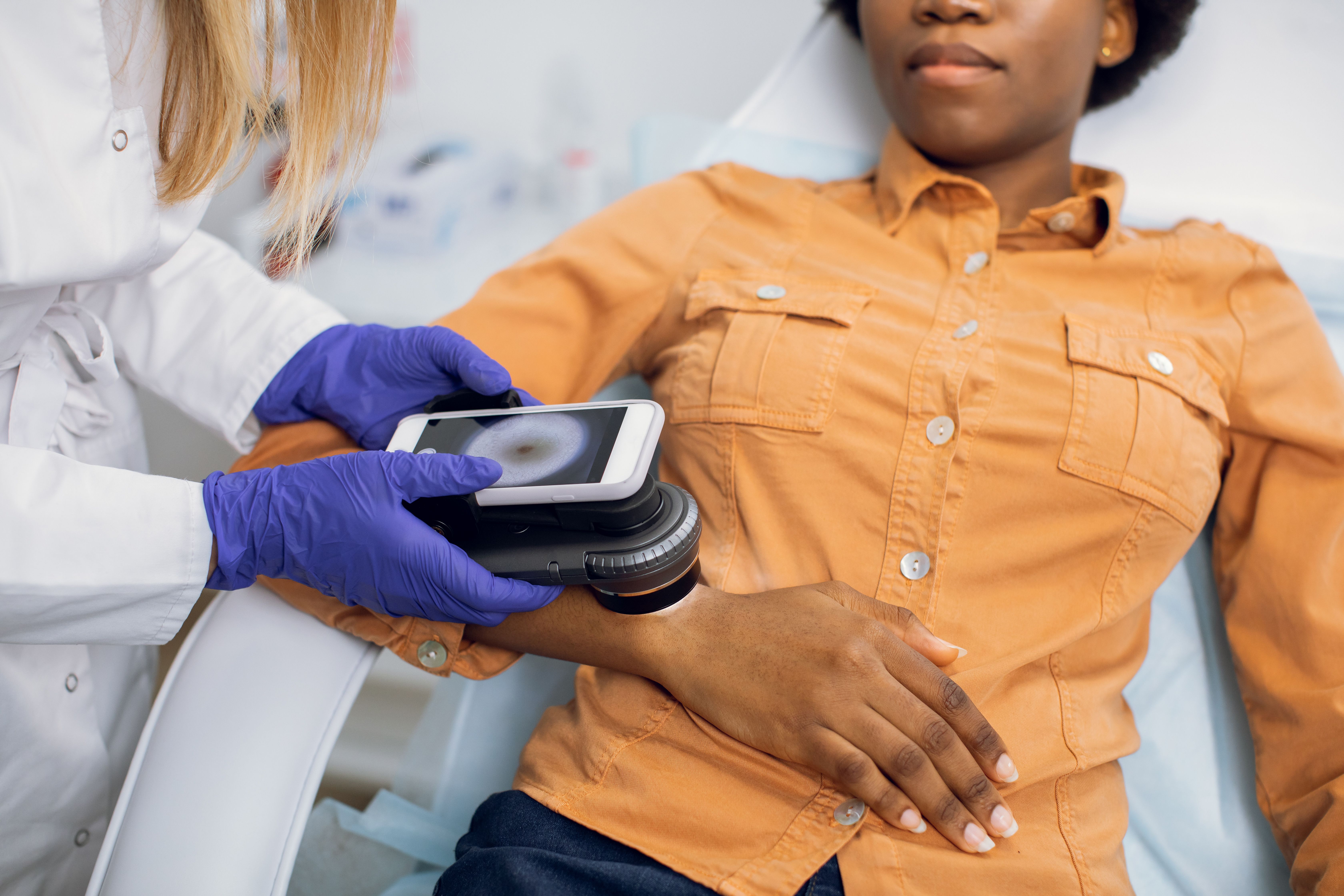- Case-Based Roundtable
- General Dermatology
- Eczema
- Chronic Hand Eczema
- Alopecia
- Aesthetics
- Vitiligo
- COVID-19
- Actinic Keratosis
- Precision Medicine and Biologics
- Rare Disease
- Wound Care
- Rosacea
- Psoriasis
- Psoriatic Arthritis
- Atopic Dermatitis
- Melasma
- NP and PA
- Skin Cancer
- Hidradenitis Suppurativa
- Drug Watch
- Pigmentary Disorders
- Acne
- Pediatric Dermatology
- Practice Management
- Prurigo Nodularis
- Buy-and-Bill
News
Article
Rates, Incidence of Skin Cancer Found to be Higher in Patients With Skin of Color and in Rural Communities
Author(s):
Two posters at the AAD Annual Meeting examined disparities in skin cancer survival between urban and rural areas and assessed how having skin of color affects this.
Two posters presented at the American Academy of Dermatology 2024 Annual Meeting evaluated urban-rural differences in skin cancer survival, as well as the impact of having skin of color (SOC). These findings add to the understanding of how health disparities related to rural living and SOC negatively impact survival outcomes.
The first poster aimed to identify differences in demographic characteristics and the treatment of patients with sebaceous carcinoma, a rare and aggressive form of skin cancer with metastatic potential.1 Additionally, the researchers analyzed survival outcomes for patients with sebaceous carcinoma who live in urban vs rural locations in the US.
The researchers evaluated differences in clinical, sociodemographic, disease, facility, and travel characteristics using data from the National Cancer Databases from 2016 to 2020. Survival differences were evaluated using Cox proportional hazards models and Kaplan-Meier curves.
A total of 1871 patients were identified, of whom 40.03% were women and 59.97% were men. Of these patients, 1797 met inclusion criteria, had been diagnosed with sebaceous carcinoma, and were included in the analysis. Most patients identified as White (89.95%) and non-Hispanic (90.97%).
Patients with sebaceous carcinoma living in rural areas traveled more than twice as far for treatment (55.1 miles) compared with urban residents (26.6 miles). Additionally, patients living in rural areas were more likely from lower-income communities (P < .001) and had lower educational attainment (P < .05). Furthermore, while most patients had been treated with surgery alone (89.04%), rural residents were more likely to undergo major amputation (2.36%) compared with urban residents (0.54%; P < .01).
Moreover, rural living was associated with increased risk of death (HR, 1.49; 95% CI, 1.11-1.98), while survival probabilities for rural residents were worse at 3 years (77.1% vs 85.2%; P < .01) and 5 years (62.2% vs 71.4%; P < .01) compared with urban residents.
A second poster aimed to examine the association between urban-rural status and skin cancer prevalence across social determinants of health (SDOH): sex, age, race, insurance status, number of personal health care providers (PHCPs), and income among those living in Florida.2
The researchers conducted a cross-sectional study using data from the Behavior Risk Factor Surveillance Survey 2018-2020. Positive skin cancer history was determined using a self-reported survey, and urban-rural status was identified according to the National Center for Health Statistics‘ definitions.
A total of 35,742 individuals were identified; 17.1% of rural and 14.9% of urban respondents reported having a history of skin cancer.
No significant differences were found between the prevalence of skin cancer and urban-rural status among non-Hispanic White individuals. However, non-Hispanic Black individuals living in rural areas reported a higher incidence of skin cancer history (1.6%) compared with non-Hispanic Black individuals living in urban areas (0.6%; P < .001). Similarly, this discrepancy between rural-urban status and skin cancer was noted among Asian (P < .001), Hispanic (P < .0001), and other non-Hispanic (P < .05) individuals.
Furthermore, increased rural skin cancer rates were observed across sex, income, insurance status, and PHCP.
These findings highlight an increased history of skin cancer among rural SOC populations, suggesting a need for further research on these disparities among communities of color.
References
- Chang R, Brunsgaard E, Reid D, et al. Rural-urban survival differences in sebaceous carcinoma: a national cancer database analysis. Poster presented at: American Academy of Dermatology 2024 Annual Meeting; March 8-12, 2024. San Diego, CA. Poster 49792. https://eposters.aad.org/abstracts/49792
- Lin R, Lee J, Maderal A, et al. The urban-rural impact on skin cancer for skin of color. Poster presented at: American Academy of Dermatology 2024 Annual Meeting; March 8-12, 2024. San Diego, CA. Poster 51459. https://eposters.aad.org/abstracts/51459
[This article was originally published by our sister publication, American Journal of Managed Care.]






